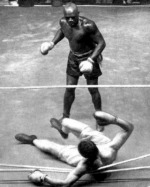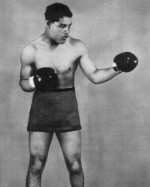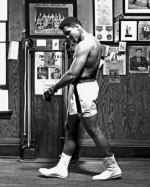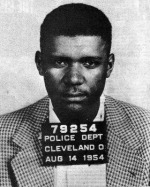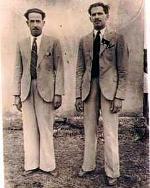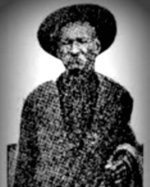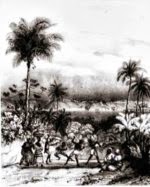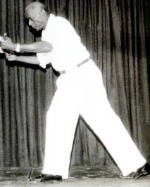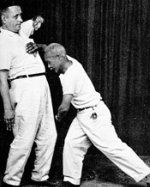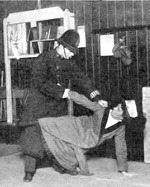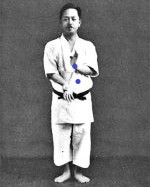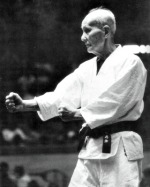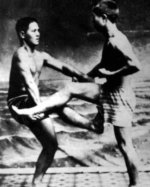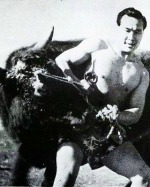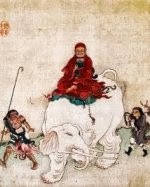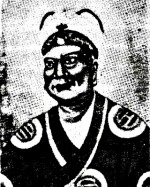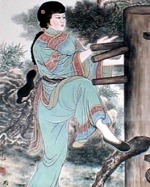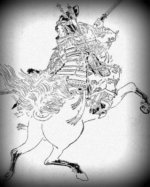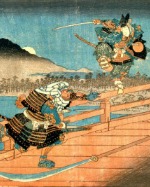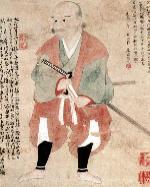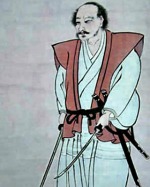The History of Fighting Masters
Best Martial Arts
Best Combat Sports
Best Military History
Fighting Quote
"If size mattered, the elephant would be king of the jungle".
~ Rickson Gracie ~
~ Rickson Gracie ~
Boxing Masters
Sam Langford
Sam Langford, aka the Boston Tar Baby, was one of the greatest boxers never to be crowned world champion. Fighting in the early half of the twentieth century, he was a victim of the colour line in boxing and was not afforded a chance at the title because of the colour of his skin despite the fact that the champion at the time, Jack Johnson, was an African American.
Sam Langford, aka the Boston Tar Baby, was one of the greatest boxers never to be crowned world champion. Fighting in the early half of the twentieth century, he was a victim of the colour line in boxing and was not afforded a chance at the title because of the colour of his skin despite the fact that the champion at the time, Jack Johnson, was an African American.
Joe Louis
Joe Louis (The Brown Bomber) was an American boxer and widely considered to be one of the greatest world heavyweight champions of all time. He became an American hero when he defeated the German Max Schmeling, then later through his work promoting the war effort. Despite his considerable success, later in his career he would face massive debts due to unfair treatment by the taxman.
Little Known Facts About Muhammad Ali
Muhammad Ali was a three-time heavyweight boxing champion and is widely regarded as the greatest boxer of all time, as well as one of the most influential sportsmen of the 20th century. This selection of little-known facts about ‘the Louisville Lip’ show he led an interesting and varied life, both inside and outside the ring.
Muhammad Ali was a three-time heavyweight boxing champion and is widely regarded as the greatest boxer of all time, as well as one of the most influential sportsmen of the 20th century. This selection of little-known facts about ‘the Louisville Lip’ show he led an interesting and varied life, both inside and outside the ring.
The Reign of Don King
Don King is an influential American boxing promoter who has staged some of the biggest fights in boxing history, increased the prize money earned by fighters and considerably raised public interest in the sport, all in his own charismatic and outspoken style. Despite this, King’s career has been constantly marred by controversy leading to him being both loved and hated in the world of boxing.
Don King is an influential American boxing promoter who has staged some of the biggest fights in boxing history, increased the prize money earned by fighters and considerably raised public interest in the sport, all in his own charismatic and outspoken style. Despite this, King’s career has been constantly marred by controversy leading to him being both loved and hated in the world of boxing.
Capoeira Masters
Manduca da Praia
Mestre Manduca da Praia, known as ‘The Elegant Capoeira Fighter’ was a notorious Brazilian martial artist in the 19th century. Not only was he known for being a ferocious warrior, but he also managed to maintain his standing as a respectable business man with in his community.
Jose Antonio do Nascimento
Jose Antonio do Nascimento was one of the best fighters of 19th century Brazil. His capoeira skills earned him a fearsome reputation and his size and prowess earned him the nickname Nascimento Grande (Big Birth).
Besouro Manganga
Besouro Manganga was so nimble that it was said he could turn into a beetle and had the ability to dodge bullets. He was an advocate of justice for his people even if this meant he had to break the law and was no stranger to violent run-ins with authorities.
Mestre Bimba
Mestre Bimba introduced to Capoeira a code of ethics, set training methods and many of its characteristic flamboyant moves. However his main contribution was to change it from a form of street fighting, to an iconic cultural pastime practiced by people from all walks of life.
Angola Capoeira
The Angola style of capoeira is one of the two main systems of the art and was introduced in 1942 by Mestre Pastinha. Unlike the other style, Regional capoeira, it focuses the individual development of each capoeirista as opposed to practicing set sequences and training methods and is more akin to the type of capoeira practiced prior to the 20th century.
The Angola style of capoeira is one of the two main systems of the art and was introduced in 1942 by Mestre Pastinha. Unlike the other style, Regional capoeira, it focuses the individual development of each capoeirista as opposed to practicing set sequences and training methods and is more akin to the type of capoeira practiced prior to the 20th century.
Jujitsu Masters
Edith Garrud - The Suffragette Jujitsu Teacher
Edith Garrud was a pioneer in British jujitsu history, becoming one of the first female martial arts instructors in the Western World. She used her skills in jujitsu to help the suffragettes in their fight to gain the vote for women, not only by protecting the movement’s leaders , but also by training others to do so when she became the instructor of a unit of suffragettes known as the Bodyguard.
Edith Garrud was a pioneer in British jujitsu history, becoming one of the first female martial arts instructors in the Western World. She used her skills in jujitsu to help the suffragettes in their fight to gain the vote for women, not only by protecting the movement’s leaders , but also by training others to do so when she became the instructor of a unit of suffragettes known as the Bodyguard.
Karate Masters
The Life and Legends of Anko Itosu
Anko Itosu was a legendary Okinawan martial artist and a pioneer in the development of karate history. He popularised many aspects of the fighting system through his Shuri-te style and helped increase the number of people who were permitted to learn it by bringing karate training out of secrecy, and even gained permission to teach it in Okinawan schools.
Anko Itosu was a legendary Okinawan martial artist and a pioneer in the development of karate history. He popularised many aspects of the fighting system through his Shuri-te style and helped increase the number of people who were permitted to learn it by bringing karate training out of secrecy, and even gained permission to teach it in Okinawan schools.
Gichin Funakoshi - Father of
Modern Day Karate
Gichin Funakoshi was born in Okinawa in 1868 and is known as the father of modern-day karate due to the innovations he made to Okinawan martial arts when he took it to Japan and popularised it with the people there. Not only did he found Shotokan karate, but he was also instrumental in spreading karate across the world.
Gichin Funakoshi was born in Okinawa in 1868 and is known as the father of modern-day karate due to the innovations he made to Okinawan martial arts when he took it to Japan and popularised it with the people there. Not only did he found Shotokan karate, but he was also instrumental in spreading karate across the world.
Kenwa Mabuni – Founder of Shito-Ryu Karate
Kenwa Mabuni started life as a sickly child but transformed himself into a strong warrior through the practice and dedication to the martial arts. Through his studies with
great karate masters such as Anko Itosu and Kanryo Higaonna, along with the kung fu master Woo Yin Gue, he was able to combine what he had learned and develop one of the four
major styles of traditional karate, Shito-Ryu.
Hironori Otsuka – Founder of Wado-Ryu Karate
Hironori Otsuka was a renowned master of jujitsu by the age of 28 before becoming a karate student under Gichin Funakoshi. He excelled and quickly rose through the ranks to become an assistant instructor, helping to develop training techniques in Shotokan karate. Later, Master Otsuka would brake away and form Wado-Ryu, one of the main four styles of traditional karate.
Hironori Otsuka was a renowned master of jujitsu by the age of 28 before becoming a karate student under Gichin Funakoshi. He excelled and quickly rose through the ranks to become an assistant instructor, helping to develop training techniques in Shotokan karate. Later, Master Otsuka would brake away and form Wado-Ryu, one of the main four styles of traditional karate.
The Real Mr Miyagi – Founder of Goju Ryu
Sensei Chojun Miyagi was an early karate master who studied martial arts in both China and his homeland, Okinawa. He earned his place in martial arts history when he used his knowledge to blend soft (or internal) with hard (or external) techniques to develop the style known as Goju-Ryu, which is considered one of the main four styles and is today widely practiced throughout the world techniques.
Sensei Chojun Miyagi was an early karate master who studied martial arts in both China and his homeland, Okinawa. He earned his place in martial arts history when he used his knowledge to blend soft (or internal) with hard (or external) techniques to develop the style known as Goju-Ryu, which is considered one of the main four styles and is today widely practiced throughout the world techniques.
Mas Oyama – Founder of Kyokushin Karate
Mas Oyama, founder of Kyokushin karate was one of the best karate masters of all time. He developed his body, mind and techniques through rigorous training and fought and won hundreds of full contact battles against fighters from many different martial arts styles. To test his skills further, he also went head to head with 52 bulls and was victorious in all, whether against man or beast.
Mas Oyama, founder of Kyokushin karate was one of the best karate masters of all time. He developed his body, mind and techniques through rigorous training and fought and won hundreds of full contact battles against fighters from many different martial arts styles. To test his skills further, he also went head to head with 52 bulls and was victorious in all, whether against man or beast.
Kung Fu Masters
Bodhidharma
Bodhidharma (Ta Mo in Chinese) was an Indian Buddhist monk who is believed to have travelled to China in the sixth century. So the legend goes, while there he visited the Shaolin Monastery and taught the monks there a set of yogic exercises to improve their overall health. Over time, these exercises would evolve into martial arts, or more specifically, into Shaolin kung fu.
Bodhidharma (Ta Mo in Chinese) was an Indian Buddhist monk who is believed to have travelled to China in the sixth century. So the legend goes, while there he visited the Shaolin Monastery and taught the monks there a set of yogic exercises to improve their overall health. Over time, these exercises would evolve into martial arts, or more specifically, into Shaolin kung fu.
Zhang Sanfeng
Zhang Sanfeng who, according to legend, was the founder of an internal Chinese martial art known as Mien Chuen that would evolve into Tai Chi Chuan. After spending many years training in the Shaolin Temple, he made his way to the Wu Tang Mountains where he developed his new style after watching a fight between a snake and a crane.
Zhang Sanfeng who, according to legend, was the founder of an internal Chinese martial art known as Mien Chuen that would evolve into Tai Chi Chuan. After spending many years training in the Shaolin Temple, he made his way to the Wu Tang Mountains where he developed his new style after watching a fight between a snake and a crane.
Pak Mei – A Kung Fu Legend
Pak Mei kung fu is believed to originate from the 17th century after the infamous burning of the Shaolin Temple. Thought by some to be a traitor and others a hero, Pak Mei’s style was so ruthless that even to this day, it is only taught in its truest form to the most elite of martial artists.
Wing Chun Kung Fu
When Yim Ving Tsun was being bullied by a local man, she found help from Ng Mui, one of the Five Elders from the Shaolin Temple. From there, the Ving Tsun (Wing Chun) style developed and was handed down from student to master before being popularised by Bruce Lee.
Samurai Masters
Tomoe Gozen
Tomoe Gozen, a rare example of a female Samurai warrior, is believed to have taken part in the Genpei Wars (1180 – 1185). She fought alongside her Master, Minamoto Yoshinaka though it is unclear how much of her story is merely martial arts legend.
Yoshitsune Minamoto
Yoshitsune Minamoto was an instrumental figure, helping his brother Yoritomo overthrow the ruling Taira Clan with several decisive victories on the battlefield. However after the war, Yoritomo turned on him and hunted him down like a common criminal.
Tsukahara Bokuden
Tsukahara Bokuden was a 16th century Japanese warrior who exemplified what a samurai should be. He was known as one of the fiercest warriors around however in later life, Bokuden would take on a more pacifist philosophical standpoint.
Miyamoto Musashi
Miyamoto Musashi is one of the most acclaimed samurai that ever lived. While undertaking a warrior’s pilgrimage in the 17th century, he fought in over 60 duels dispatching the best swordsmen in a given area, often in fights to the death.
The images on this site are believed to be in the public domain, however, if any mistakes have been made and your copyright or intellectual rights have been breeched, please contact andrew@articlesonhistory.com.

